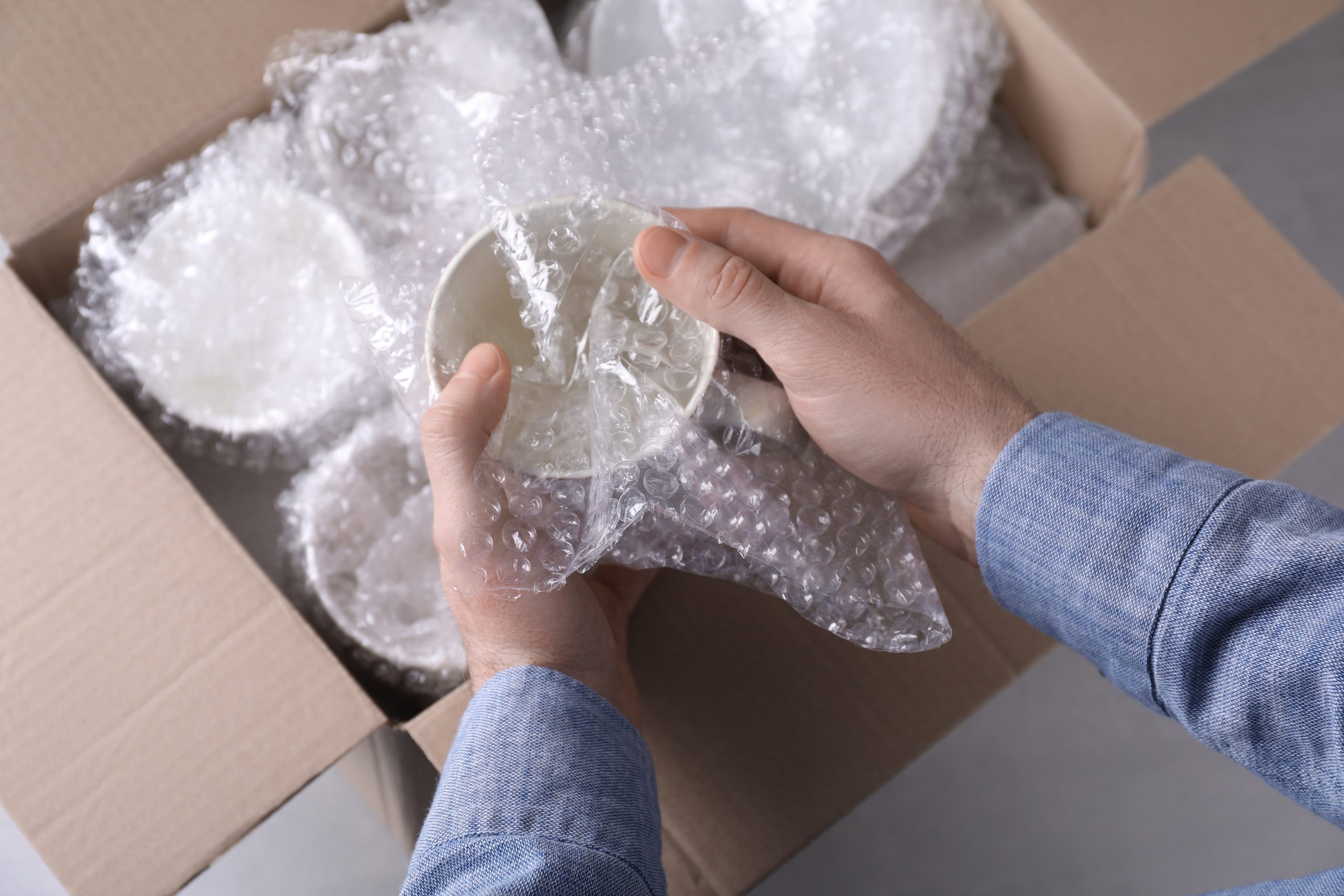The Ultimate Guide to Packing Fragile Items

Moving can be a stressful endeavor, especially when it comes to ensuring your fragile items reach their new home unharmed. Whether it’s your grandmother’s heirloom glassware, your expensive electronics, or cherished pieces of artwork, proper packing is essential. If you don’t want to risk packing these items yourself, Big John’s Moving can do the packing for you! This blog is the ultimate guide to packing fragile items.
Packing Glassware
Glassware is one of the most common fragile items in any household. Here’s how to pack it safely:
Materials Needed:
- Sturdy cardboard boxes
- Packing paper or bubble wrap
- Packing tape
- Dividers or cell boxes (optional)
- Labels and markers
Steps:
- Preparation: Start by gathering all the glassware and the packing materials. Ensure the boxes are sturdy and can withstand the weight of the glassware.
- Wrap Each Item: Wrap each piece individually with packing paper or bubble wrap. For extra protection, use both. Ensure that the entire item, including handles and spouts, is covered.
- Box Lining: Line the bottom of the box with crumpled packing paper or a layer of bubble wrap to create a cushioning base.
- Packing: Place the wrapped glassware in the box. If using a divider, place it in the box first and then insert the glassware into each section. For stemware, place them upside down to prevent damage to the stems.
- Fill Empty Spaces: Fill any gaps in the box with crumpled packing paper or bubble wrap to prevent movement during transit.
- Seal and Label: Once the box is filled, add a final layer of packing paper on top. Seal the box securely with packing tape, label it as “Fragile” and indicate the contents (e.g., “Glassware”).
Packing Electronics
Electronics require special care due to their sensitivity and value. Follow these steps to ensure their safe transport:
Materials Needed:
- Original packaging (if available) or sturdy boxes
- Anti-static bubble wrap or foam
- Packing paper
- Ziplock bags
- Labels and markers
Steps:
- Back-Up Data: Before packing, ensure all important data is backed up on an external drive or cloud storage.
- Disassemble: Carefully disassemble any removable parts like cables, batteries, and accessories. Place small parts in labeled Ziplock bags.
- Wrap Components: Wrap the main components in anti-static bubble wrap or foam. If the original packaging is available, use it as it is specifically designed to protect the item.
- Box Lining: Line the bottom of the box with packing paper or foam padding.
- Packing: Place the wrapped items in the box. Ensure that there is no space; fill gaps with packing paper or foam.
- Seal and Label: Seal the box with packing tape and label it as “Fragile – Electronics”. Note the contents and which room it belongs to.
Packing Artwork
Artwork can be particularly challenging due to its size, shape, and value. Here’s how to pack it securely:
Materials Needed:
- Sturdy cardboard boxes or custom-sized boxes
- Glassine paper or acid-free paper
- Bubble wrap
- Packing tape
- Corner protectors
- Labels and markers
Steps:
- Preparation: Measure the artwork and find appropriately sized boxes or custom-crate a box.
- Wrap Artwork: Place a layer of glassine or acid-free paper over the artwork to protect it from dust and moisture. Then, wrap it with bubble wrap, securing the edges with packing tape.
- Protect Corners: Use corner protectors to safeguard the edges of the artwork, which are particularly vulnerable during a move.
- Box Lining: Line the bottom of the box with packing paper or bubble wrap for added cushioning.
- Packing: Place the wrapped artwork in the box, ensuring it fits snugly. If there is extra space, fill it with packing material to prevent movement.
- Seal and Label: Seal the box with packing tape and label it as “Fragile – Artwork”. Note the contents and the room it should go to.
The Ultimate Guide to Packing Fragile Items
- Do Not Overpack: Overpacking can cause boxes to become too heavy and more likely to be dropped.
- Label Clearly: Always label boxes with fragile items clearly and indicate the correct side up.
- Use Quality Materials: Invest in high-quality packing materials to ensure maximum protection.
- Take Your Time: Rushing can lead to mistakes. Take your time to ensure each item is packed properly.
You can significantly reduce the risk of damage to your fragile items during your move by following this guide to packing fragile items. Transporting and storing delicate items requires skilled handlers and master packers, as well as the highest standards in shipping crates, wrapping materials, and climate control. Big John’s Moving will make your transition smooth and easy and deliver your purchased supplies free of charge. Happy moving!


